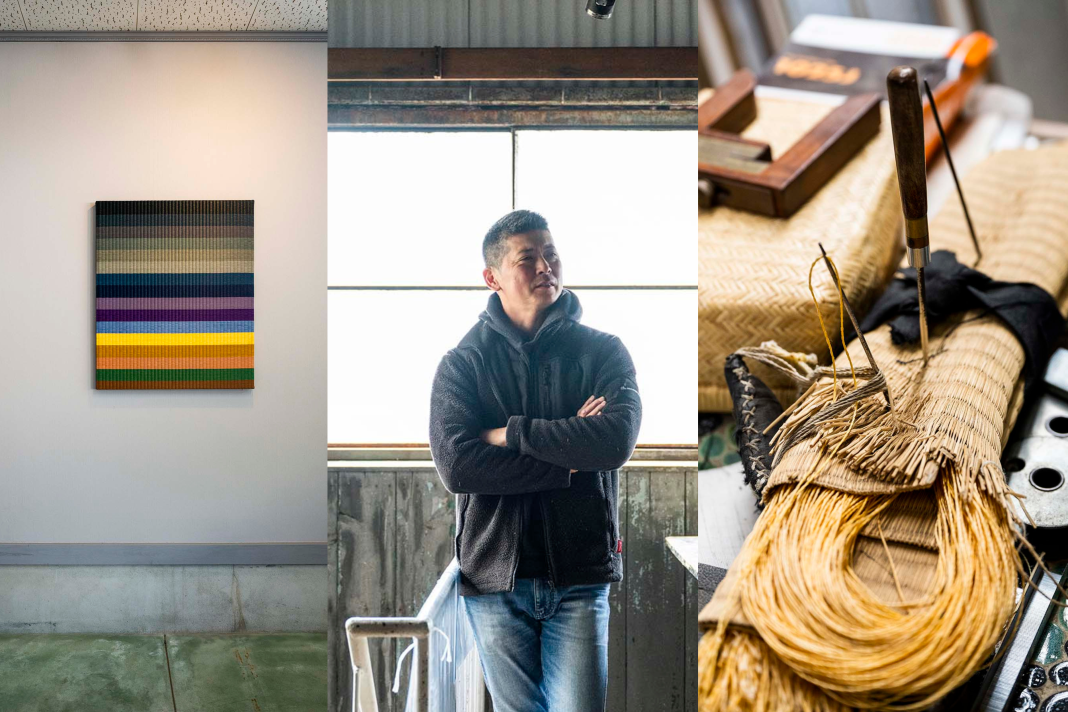Learn about the ancient art of tatami making, a centuries-old craft that uses compressed rice straw and woven rush grass (or igusa) to make soft flooring that facilitates meditation, rest and tea ceremonies
This article about tatami includes an excerpt from Shosa – Meditation in Japanese Handwork by Ringo Gomez-Jorge, published by Luster Publishing, £35
We proudly champion makers across Scotland who take contemporary approaches to traditional crafts that not only satisfy the needs and tastes of the modern consumer, but respect cultural heritage and keep centuries of craftsmanship alive. Here, we take a look further afield, visiting tatami maker Mitsuru Yokoyama in Kyoto to learn about the ancient art of making tatami, a type of rush-covered mat used as floor coverings in Japanese homes and martial arts or ceremonial halls.
Tatami mats were initially used by Japanese nobility in the eighth century to increase comfort for sleeping and hosting tea ceremonies both at home and in temples. By the 1300s (the Muromachi period), Samurai had developed an entirely new architectural style that incorporated tatami, where they used multiple soft grass mats to cover entire rooms, increasing comfort for training barefoot. By the 17th century, tatami flooring had become less of a status symbol and more a tool that everyday people used to bring moisture regulation and thermal insulation into their homes.
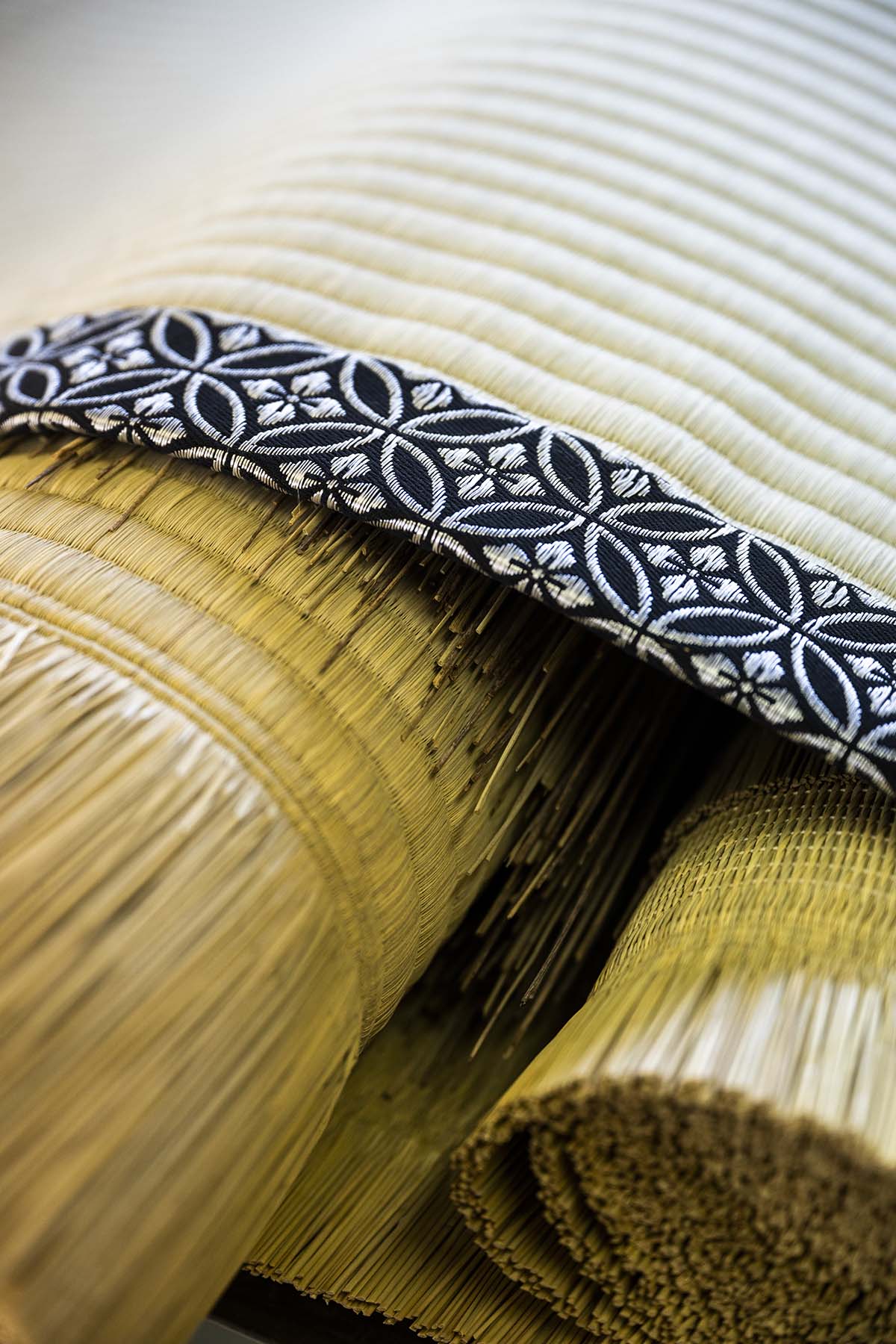
In modern interior design, the most intricately woven pieces are used in an entirely new context, often positioned as focal points around dining tables and in meditation areas or reading nooks.
In 2016, for example, French furniture maker José Lévy turned tatami mats into geometric cupboard doors and curving backs of sofas. In Kenrak Tokmoto’s Inari House, TOKMOTO Architectures Room used 12 identical tatami mats to create a gridded layout that zoned seven rooms in the small 87-square-foot space, complete with a tatami-laid hallway that serves as a space for family get-togethers.
Channel 4’s TV show Grand Designs in the UK included a Japanese-style build in the Welsh woodlands that (rather unusually for British homes) featured central tatami mats, cushions, Ikebana flower arrangements and sliding paper doors. Taiwanese firm Atelier Boter still utilises tatami in their sustainably-focused hospitality and residential projects today.
Most recently, Belgium-based freelance journalist Ringo Gomez-Jorge and photographer Rob Walbers released Shosa, a book that explores traditional Japanese craftsmanship and the beauty that lies in the local makers’ eye for detail and their commitment to keeping ancient techniques alive. In this book, released in April this year, Ringo spends time with Mitsuru Yokoyama, a tatami maker from Ohara in Kyoto, who leads him through his local Hōsen-in temple. This is how it went, in Ringo’s own words…
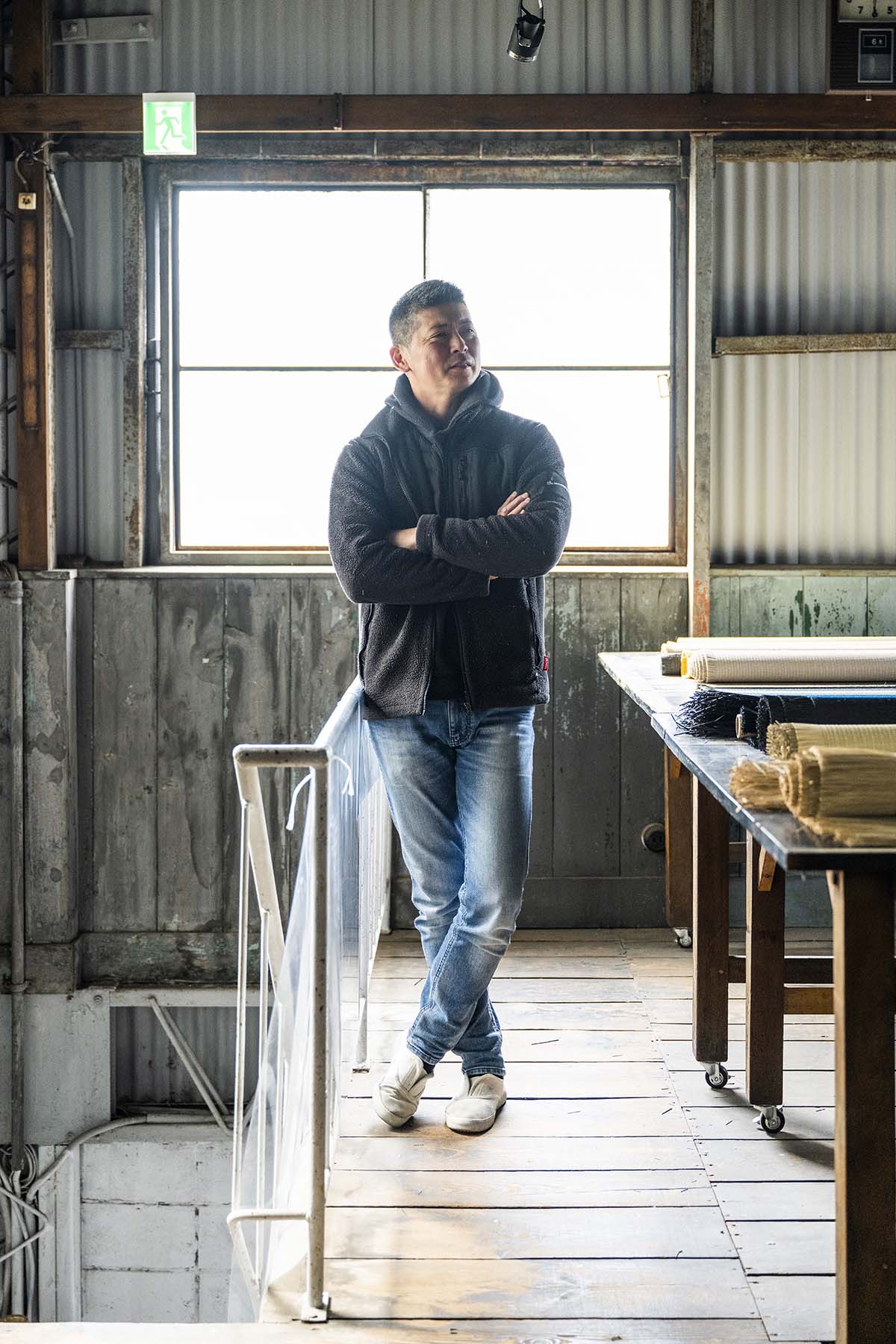
The Hōsen-in temple was historically used by traveling monks and pilgrims, but is now overwhelmed with tourists who sit cross-legged in their polyester shorts on traditional tatami mats made of nothing more than rice and grass. It is a flooring of extreme serenity, and at Hōsen-in, the tatami flooring is made by Mitsuru Yokoyama’s strong hands. “Whether you practise ikebana (flower art) or perform a tea ceremony, all traditional Japanese activities take place on the tatami mat. It’s the basis of everything,” says Mitsuru.
“In real estate, the size of a room is still indicated by the number of tatami mats you can fit into it. A tatami has two standard sizes. The Kyoto style measures 191 by 95.5 cm, and the Tokyo-style tatami 176 by 88 cm. Housing is usually measured in Tokyostyle tatami, temples and machiya in the older Kyoto-style.”
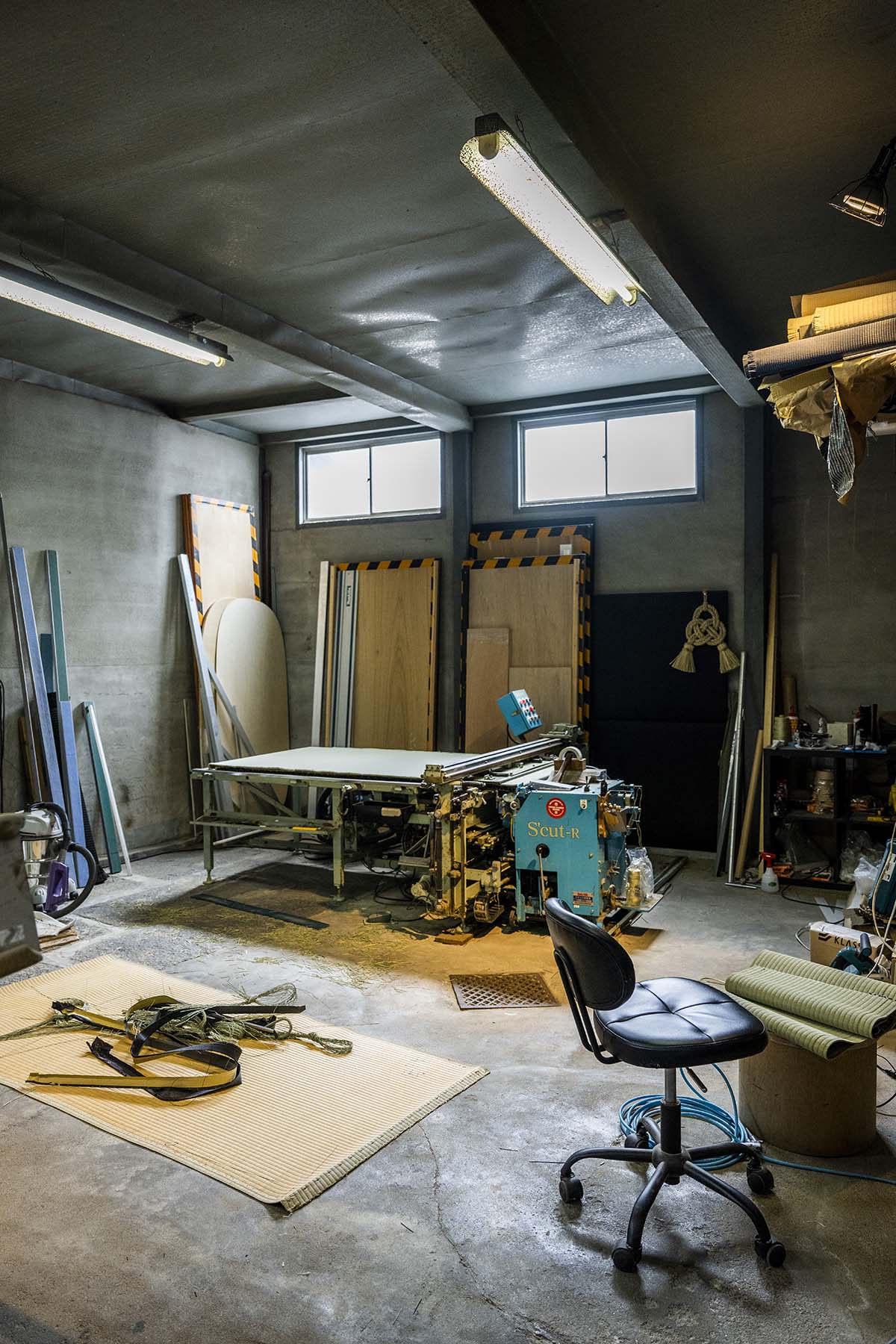
To become a tatami maker, you go to a tatami school in Tokyo or Kyoto. “I chose Kyoto because I find Tokyo a terrible place. It’s way too busy for me. The training takes four years. All the students are sons of tatami makers and go to school to learn the theory while gaining experience at their parents’ companies. The principal was surprised that I showed up, seemingly out of nowhere, but was kind enough to offer his support. During the training, I worked from nine to five at a tatami maker and took classes in the evenings. In the factory where I learnt the trade, they produced hundreds of tatami each month. It felt robotic. After my training, I stayed there for five years and then started my own business.”
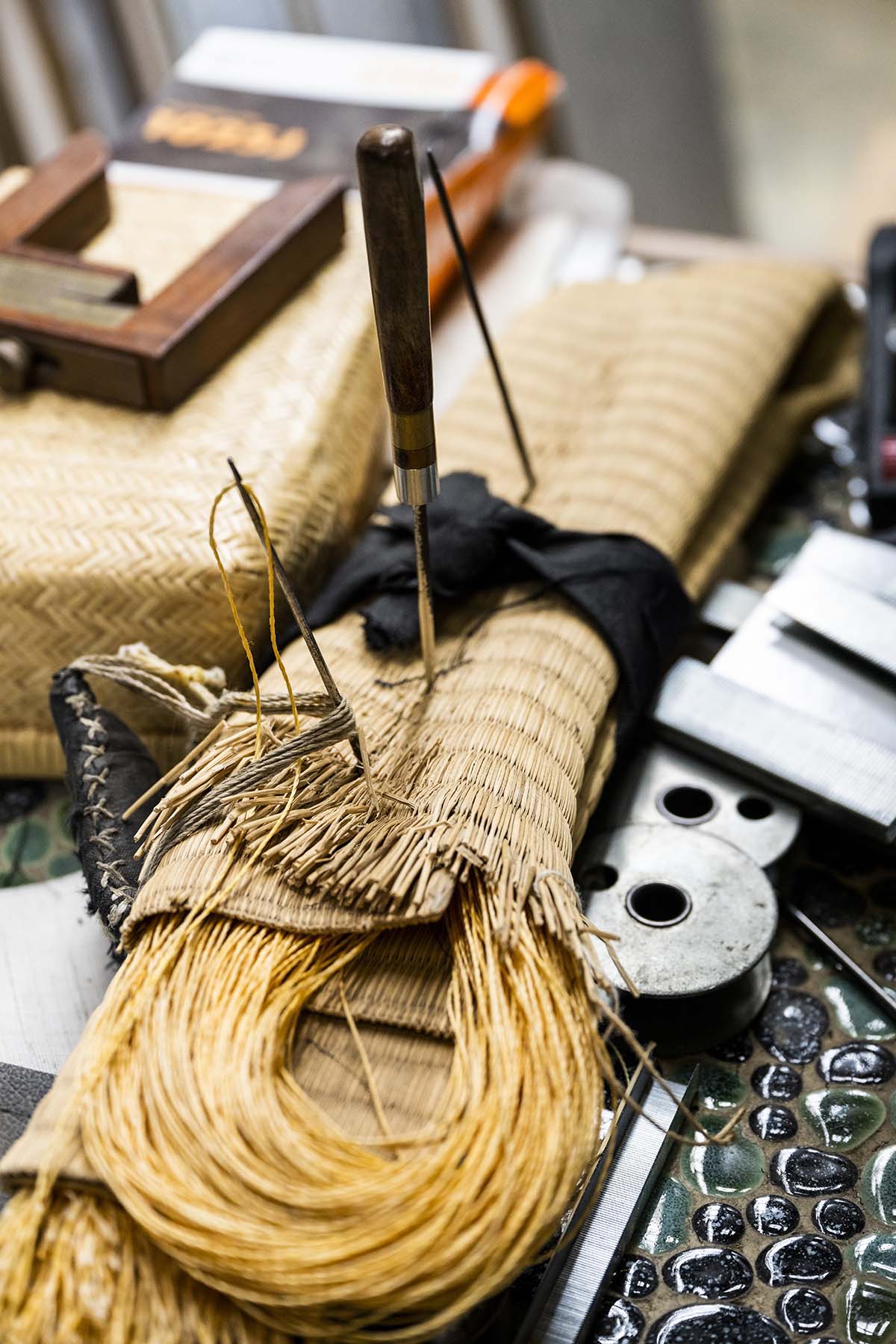
A tatami is not made by one craftsman. The basis of the mat is made from the hay of rice plants and is pressed into a board by the rice farmers after the harvest. The top layer is made of igusa, a specific type of grass that is mainly grown and woven in Kumamoto, a prefecture in the most southern of the four big islands called Kyushu. The tatami maker’s task is to sew the igusa to the base and line it with a cotton edge called heri. This heri is woven by another craftsman.
All this handwork means a tatami is a pricey but qualitative product. It is particularly ecological, soundproof, insulating and moisture regulating. It also has a delightful aroma that not every Westerner might fully appreciate. Its scent is reminiscent of hay. “The fragrance of a tatami is relaxing,” says Yokoyama. “You feel as if you’re in nature.” Initially, tatami are green. After a few years, they turn a golden yellow.
It is hypnotising to watch Yokoyama at work. Although he was taught to sew by hand, he now uses an old sewing machine. “Sewing by hand is very time-consuming and quite unnecessary for many of the tatami jobs I get today,” he says. “Even with this machine, it still takes a day or more to make a tatami.”
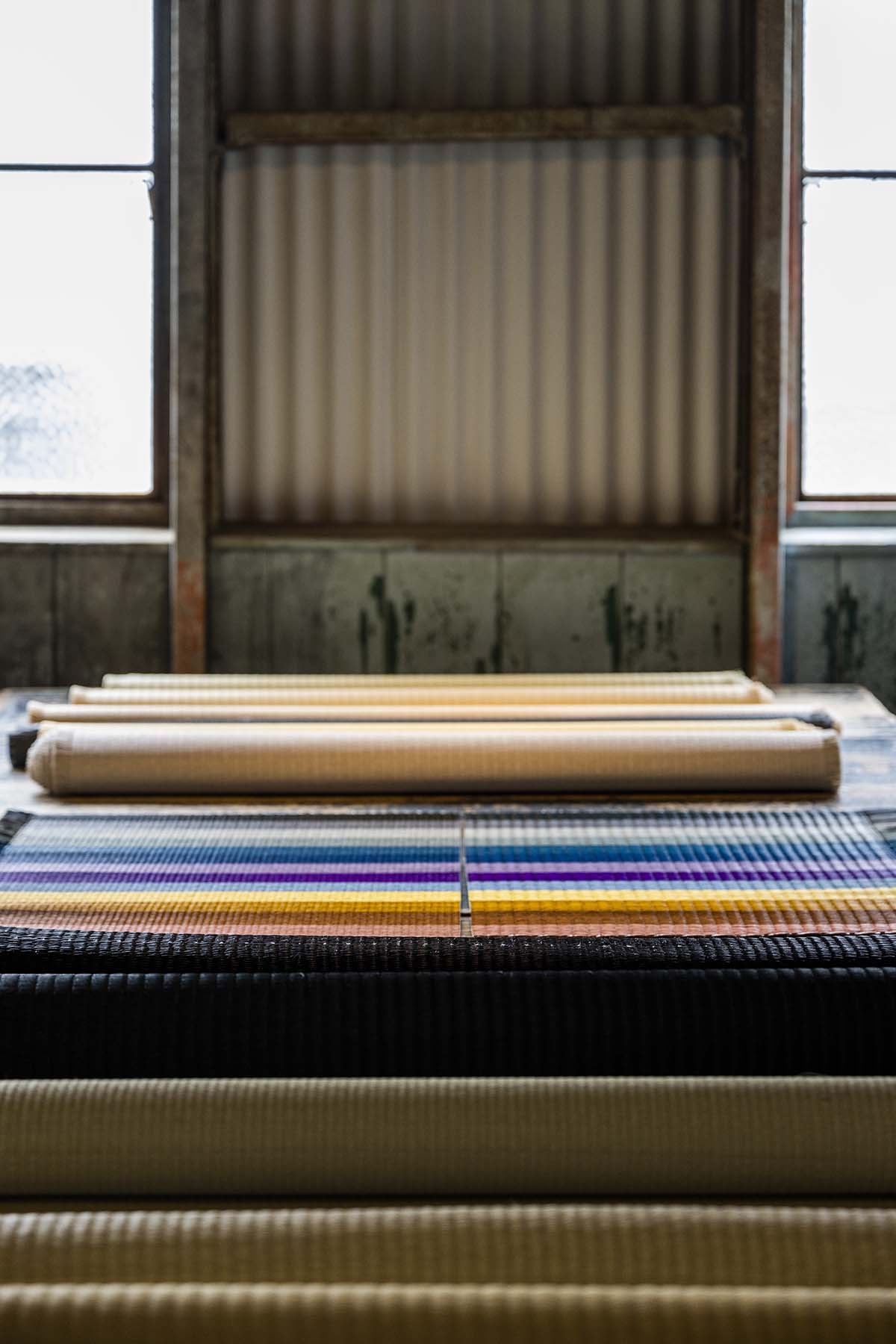
Yokoyama is a pragmatic man. What does an old word like shosa mean to him? “The word refers to how you move, behave and even dress,” he says after some consideration. “Take, for instance, the perfect posture of a craftsman at work in an indigo kimono.” He paints a portrait of a traditional maker. Can’t shosa be applied to him? “I wear worn clothes”, he laughs. “My movements might not be shosa, but my product is. The tatami is the basis upon which traditional Japanese life unfolds. And thus, it is the basis of all shosa”.
“Shosa is about moving in a prescribed way,” he continues. “This is the case in traditional tatami making, which you learn at school. You keep your back straight and punch the needle through the mat while paying full attention to the movement. There’s truth in this. Your sewing becomes better this way. To me, there’s no singular right way to go about it. As you become better at your craft, you figure out techniques and movements for yourself.”
Follow Ringo Gomes-Jorge on Instagram | Follow Rob Walbers on Instagram | Follow Mitsuru Yokoyama on Instagram
About Shosa
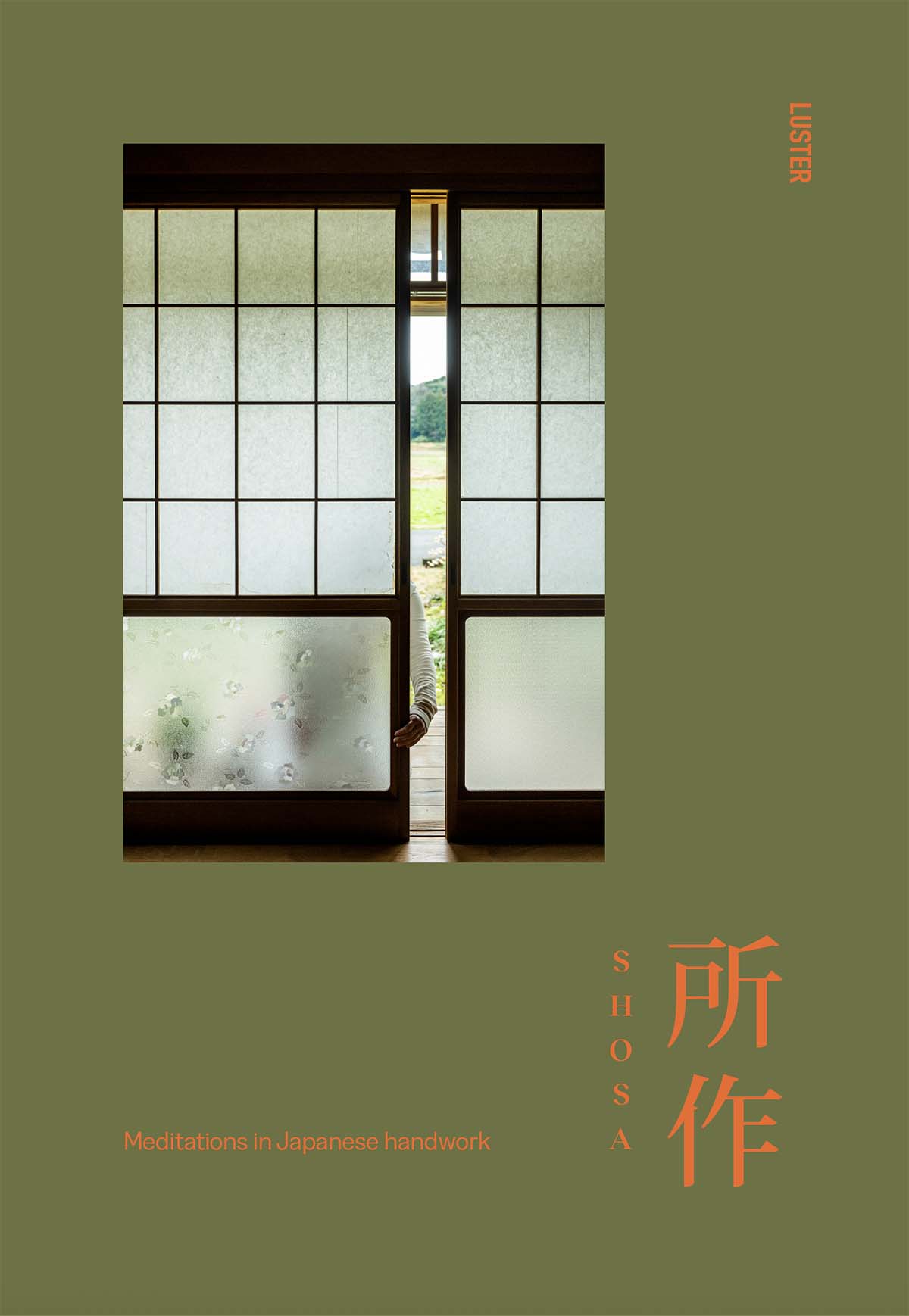
The Japanese concept Shosa is hard to translate: it’s about the beauty that lies in the repetition of actions and movements, striving for perfection and efficiency in their execution. You can find it in the rituals of a Japanese tea ceremony, but also in the repetition of cleaning actions (like in the movie Perfect Days) or in the skilful actions of craftsmen and women.
This book portrays 12 Japanese makers from different regions. From a bamboo weaver to a tatami mats maker, from a ceramist to a cook who specialises in puddings. The writer and photographer went to visit these makers in their studios and created profound portraits in words and images. Because the craftsmen and women often rely on locally sourced materials, the stories in this book also cover the surroundings. The aim isn’t to provide tourist guide-like information, but to share a taste of various regions in Japan, so this book can also serve as a source of inspiration when you’re planning a trip to the Land of the Rising Sun.
Author Ringo Gomez-Jorge is a Belgium-based freelance journalist who specialises in face-to-face, in-depth interviews with designers, makers and artists. He writes for Flemish quality newspapers like De Standaard and De Morgen and has a weak spot for Japan, where he tries to spend as much time as possible.
Photographer Rob Walbers is a Tokyo-based freelance photographer. His work ranges from music photography (including portraits of Madonna, The Rolling Stones, Lady Gaga, Morrissey and Radiohead) to the fields of fashion and lifestyle.
Buy Shosa online
Meet James Donald, a Scottish weaver and founder of PickOne clothing.
Meet the Maker: James Donald, weaver and founder of PickOne clothing


